Understanding E-A-T - The Key Factor for Website Rankings and 21+ Optimization Strategies
- Published on
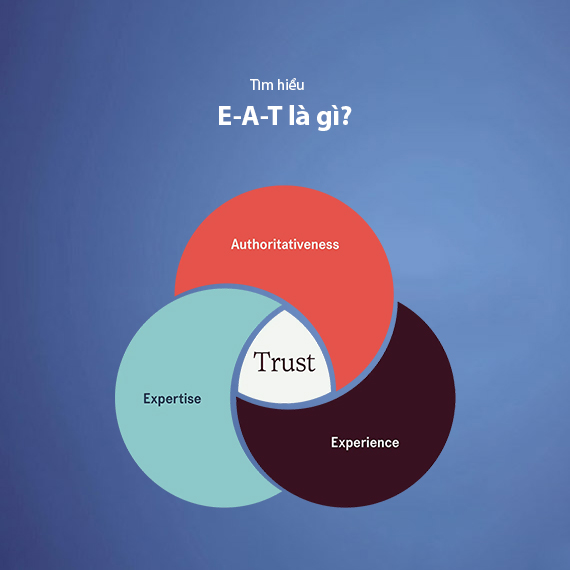
- What is E-A-T?
- Expertise (E)
- Authoritativeness (A)
- Trustworthiness (T)
- The Role of E-A-T in Website SEO
- Boosting Rankings on Google
- Building User Trust and Interaction
- Reducing the Risk of Google Penalties
- Establishing Brand Authority
- Industries That Must Prioritize E-A-T Standards
- Healthcare
- Finance and Banking
- Legal Services
- E-Commerce
- Education and Training
- 21+ Ways to Apply E-A-T for SEO
- Create Author Profiles for Articles
- Include Author Information at the End of the Article
- Create Social Profiles for Authors
- Optimize the "About Us" Page
- Create Social Media Profiles for Your Business
- Maintain Long-Standing Social Profiles
- Link Social Media Profiles to Your Website
- Customer Service Information Page
- Include Responsible Party Information at the Footer
- Use Original Content (No Copying or Spinning)
- Avoid Overly Aggressive Sales Navigation
- Avoid Sensational Clickbait Headlines
- Increase Time on Site
- Use HTTPS and SSL Certificates
- Encourage Positive Reviews on Google Maps
- Avoid Inaccurate Information and Align with Expert Consensus
- Remove Low-Quality Content from Your Website
- Avoid Self-Citations or Fake References
- Build Backlinks from Reputable Websites (Quality Backlinks)
- Optimize the FAQ Page (Frequently Asked Questions)
- What Happens If You Ignore E-A-T in SEO?
- Real-World Example:
- Conclusion
What is E-A-T?
E-A-T stands for Expertise, Authoritativeness, and Trustworthiness—three criteria used by Google to assess the credibility and quality of a website's content. These factors directly impact a website’s ranking, especially in areas like health, finance, and legal services, where users require accurate and reliable information.
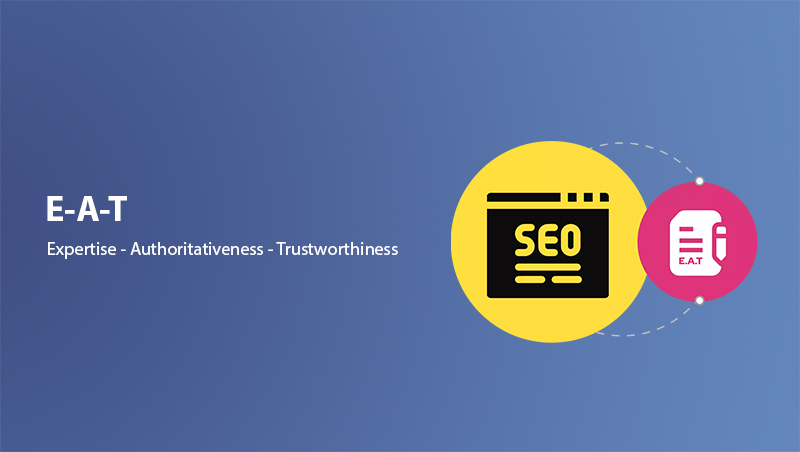
Ensuring expertise in your content helps build trust with both search engines and readers. Additionally, a website with a clear author profile or links to authoritative sources will be considered more authoritative. On the other hand, if the content lacks transparency or is duplicated, the website may drop in rankings for failing to meet Trustworthiness standards.
When optimizing E-A-T elements, ensure that contact details, reviews, and security certifications (HTTPS/SSL) are prominently displayed to reinforce trust with users.
Expertise (E)
Expertise refers to the depth of knowledge that the author or organization has in the specific field. The more specialized and expert-level the content, the more Google can recognize it as reliable and beneficial to users.
For example, in the healthcare sector, articles should be authored or reviewed by doctors or medical experts to ensure accuracy. Similarly, financial articles should be written by professionals with a strong financial background to avoid vague or unsupported information.
Creating expert-level content not only enhances the credibility of the website but also increases user interaction, improving time-on-site—a key factor for Google’s ranking algorithm.
Authoritativeness (A)
Authoritativeness measures the credibility of the author, website, or organization in its field of expertise. An authoritative website is recognized as a trustworthy source and a key voice in its industry.
This factor is reflected not only by self-claims of expertise but also by external signals, such as:
- High-quality backlinks: Links from reputable websites in the same field act as "votes" that support the website’s authoritativeness.
- Media mentions: Being mentioned on trusted platforms like news sites or specialized industry outlets strengthens the website's authority.
- User interactions and reviews: Positive reviews from users, especially on platforms like Google Business Profile or trusted review sites, act as a powerful signal of credibility.
Optimizing authoritativeness not only strengthens your website in Google's eyes but also helps establish a professional image, making it easier for users to trust the information provided.
Trustworthiness (T)
Trustworthiness reflects how reliable the website is for both users and search engines. Google prioritizes websites that present transparent, accurate, and trustworthy information. This is particularly critical for YMYL (Your Money, Your Life) content, which encompasses fields like finance, healthcare, and legal matters—where false information can have serious consequences.
Key factors to enhance website trustworthiness include:
- HTTPS Security Certificate: A website must have an SSL certificate to ensure secure data transmission and prevent data breaches.
- Clear contact information: Include an address, phone number, email, and other communication channels so users can easily connect if needed.
- Privacy policy and terms of service: Publishing clear policies about user privacy and terms of use enhances the website's professionalism and reliability.
- Positive user reviews: Favorable feedback on platforms like Google Business Profile or Trustpilot reinforces the website’s credibility for both users and Google.
- Reliable references: When presenting key information, make sure to cite authoritative sources, such as reputable news outlets, expert opinions, or verified documents.
Note: Avoid "self-citations" or referencing low-quality sources, as this can lead to poor trustworthiness scores from Google. Building trustworthiness not only improves SEO rankings but also earns user loyalty, making your website stand out in a competitive market.
The Role of E-A-T in Website SEO
E-A-T plays a crucial role in determining content quality and directly impacts how Google ranks a website. These factors not only improve SEO but also help establish your brand's credibility in the eyes of users.
Boosting Rankings on Google
Google prioritizes websites with high-quality, reliable content authored by credible experts. Websites that meet the criteria for expertise, authoritativeness, and trustworthiness are more likely to rank higher in search results, especially for YMYL (Your Money, Your Life) queries.
Building User Trust and Interaction
A transparent, reliable website managed professionally instills confidence in users. When users trust the content, they spend more time on the page (increasing time-on-site) and are less likely to leave immediately, which improves overall SEO performance.
Reducing the Risk of Google Penalties
Google’s algorithm updates, such as Google Medic Update, heavily emphasize E-A-T elements. Websites with inaccurate information, misleading content, or keyword-stuffed pages aimed at manipulating rankings are at risk of severe penalties or significant drops in rankings.
Establishing Brand Authority
Following E-A-T standards not only improves SEO rankings but also builds a reputable brand image among customers and industry professionals. Businesses in the health, legal, and finance sectors that meet these standards can secure a strong market position.
In summary, E-A-T is not just a technical SEO factor but the foundation for building trust with both users and search engines. Ignoring E-A-T can lead to significant risks in your website’s SEO optimization.
Industries That Must Prioritize E-A-T Standards
Not all websites are equally affected by E-A-T criteria. However, some industries, especially those categorized as YMYL (Your Money, Your Life), need to pay close attention to these standards. These are sectors where the content directly influences users' health, finances, or decision-making.
Healthcare
Websites offering medical information, health advice, nutrition guides, or pharmaceutical content must ensure that their information is verified by experts in the field. Articles related to medical conditions or medications should be authored or reviewed by certified doctors or reputable medical organizations.
Finance and Banking
Websites focused on investments, credit, banking, or personal financial management must demonstrate credibility and transparency. Inaccurate content in this field can cause significant financial harm to users, which is why Google carefully evaluates the quality of such information.
Legal Services
Websites providing legal services or legal advice must be authored by experienced attorneys or legal professionals. The content should also be updated regularly to reflect the latest legal regulations and policies.
E-Commerce
E-commerce websites must present transparent product information, return policies, and customer support options. Positive user reviews and clear contact details are also crucial for building trust.
Education and Training
Online learning platforms, educational blogs, or research websites must disclose the credentials of the content creators and provide clear sources for the information shared. Transparency about the organization behind the content is key to building authority in this sector.
YMYL industries must not only adhere to E-A-T standards to improve SEO rankings but also ensure they deliver genuine value to users, as their content has a direct impact on users' decisions and well-being.
21+ Ways to Apply E-A-T for SEO
To optimize your website according to E-A-T, you need to implement specific methods to build expertise, authority, and trust in the eyes of both users and search engines. Below is a detailed list of 21+ strategies to improve your website’s SEO performance.
Create Author Profiles for Articles
One of the most effective ways to enhance E-A-T is by creating detailed author profiles for each article on your website. Google prioritizes content created by experts in the relevant field. By building comprehensive author profiles, you help both search engines and users identify the responsible person behind the content.

How to Do It:
- Basic Information: Include the author’s full name, a clear profile picture, and a brief bio highlighting their professional expertise.
- Expertise Details: Mention certifications, degrees, or work experience related to the article’s subject to reinforce the author's credibility.
- Supplementary Links: Add links to the author’s LinkedIn, Twitter, or other published articles to provide additional transparency and connections.
Real-World Example:
A personal finance article will be more trustworthy if it’s written by an expert with years of experience in banking or asset management. When detailed information about the author is provided, readers are more likely to trust and engage with the content.
Benefits:
- Increases user trust and encourages longer time-on-site.
- Reduces bounce rate due to the perceived credibility of the content.
- Helps Google understand the website’s expertise, especially for YMYL topics (Your Money, Your Life).
An author profile is not just an additional detail—it’s a crucial component that establishes the authority and transparency of your website for both users and search engines like Google.
Include Author Information at the End of the Article
Displaying the author’s information at the end of the article not only increases transparency but also reinforces that the content is created by a legitimate expert. Users often check the author’s credentials before deciding to trust the content.

How to Do It:
- Placement: Author information should be displayed at the bottom of the article or in a prominent author box for easy visibility.
- Details: Include the author’s picture, name, title, and a brief description of their role or expertise.
- Profile Links: Add buttons linking to the author’s social media or a detailed profile page to provide further information.
Notes:
Author information should be concise yet informative and should not be hidden behind collapsible buttons or hard-to-find sections. This ensures that Google can easily crawl the data and verify the content’s credibility.
Benefits:
- Enhances the article’s authoritativeness and transparency.
- Helps Google better understand the author’s role and boost the website’s ranking.
Create Social Profiles for Authors
Social media is one of the most effective tools for building credibility and personal branding for authors. An author with clear, professional social profiles will enhance the authenticity of the content they produce.
How to Do It:
- Create accounts on reputable platforms such as LinkedIn, Twitter, and Facebook.
- Update professional information, current work, and achievements related to their field.
- Share articles from your website on these platforms to increase engagement and affirm expertise.
Why This Is Important:
Google tends to consider an author's online presence when evaluating their authority. An author with active online engagement and a significant following on social platforms will build greater trust.
Benefits:
- Increases visibility and credibility for the author's personal brand.
- Improves traffic from social media to the website.
Optimize the "About Us" Page
The "About Us" page helps users and search engines understand more about your business, team, and goals. A detailed and professional About Us page not only enhances transparency but also reinforces user trust. This is one of the key factors that help Google evaluate the Trustworthiness of your website.
How to Optimize the About Us Page:
- Provide detailed business information: Include your company’s history, mission, core values, and significant achievements.
- Introduce key experts: Display images, names, roles, and expertise of key members in the business or content creation team.
- Certifications and achievements: If your business has obtained certifications, awards, or third-party recognition, include them on the About Us page to boost credibility.
- Link to social media and contact pages: This makes it easier for users to find additional information and increases the transparency of your brand.
Benefits:
- Builds trust with users when they know who is behind the content.
- Helps Google identify your website as transparent and trustworthy.
- Encourages users to return to your website due to the sense of connection with your team or brand.
Clear contact information not only makes it more convenient for users but also signals transparency to Google.
Create Social Media Profiles for Your Business
Building social media profiles for your business increases brand credibility and strengthens your online presence. In addition to expanding your reach to users, these accounts also serve as a strong signal to Google regarding the authority and trustworthiness of your business.
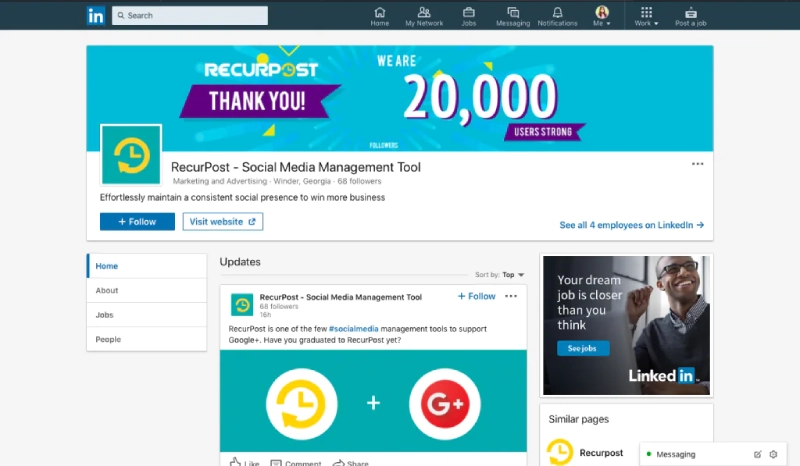
How to Do It:
- Create a complete profile: Ensure your company profile on platforms such as Facebook, LinkedIn, Instagram includes your brand name, logo, detailed business description, and a link to your official website.
- Verify accounts: If possible, verify your accounts (e.g., blue checkmarks on Facebook or Instagram) to enhance authenticity.
- Post consistently: Share regular content such as blog posts, company news, and activity photos to maintain an active presence.
- Engage with users: Respond to comments and messages quickly to boost engagement and foster customer goodwill.
Benefits:
- Increases brand visibility and user engagement across multiple platforms.
- Acts as a "trust vote" in Google's eyes when your website is linked to official social media accounts.
- Attracts more organic traffic from social media to your website.
Real-World Example:
A real estate business with a detailed LinkedIn profile that shares posts about new projects, industry news, and company awards will be viewed as more credible by potential customers.
Learn more: How to Boost Engagement on Facebook to Support SEO.
Maintain Long-Standing Social Profiles
A long-standing, consistently active social media account is a key factor in proving the authority and trustworthiness of your business. Social profiles with a long history of activity and positive user engagement are more influential in the eyes of both users and Google.
How to Maintain:
- Post regular content: Avoid leaving your accounts inactive for extended periods, as this can diminish credibility.
- Maintain organic engagement: Focus on building a loyal community by posting helpful content and responding to user comments or messages.
- Avoid spam: Limit the frequency of ads or irrelevant content, as this can erode user trust.
Benefits:
- Increases your authority score as Google evaluates brand consistency and sustainability.
- Enhances your chance of appearing in social media search results and driving users to your official website.
Link Social Media Profiles to Your Website
Linking social media accounts to your official website creates a cohesive online ecosystem and boosts your business's authenticity. This allows users to easily find your website when browsing your social media profiles and vice versa.

How to Do It:
- Add website links: Include your website URL in your social media bios (e.g., Facebook, Instagram, LinkedIn).
- Create clear CTAs (Call To Actions): Use calls to action such as "Learn more on our website" or "Discover our products here" to direct users to your website.
- Add social media icons to your website: Display icons linking to your social media accounts in the website's header or footer to increase two-way connectivity.
Benefits:
- Increases website traffic from social media sources.
- Enhances transparency by linking official social media profiles to a verified website.
Customer Service Information Page
A comprehensive and professional customer service information page demonstrates the business's commitment to its users. The more detailed the support page, the more trust it builds and the fewer complaints or doubts arise from potential customers.
How to Do It:
- Provide contact channels: Display all relevant contact information, including phone numbers, email addresses, live chat, or chatbot options to give users multiple ways to reach out for support.
- Include a FAQ section: Provide a list of common questions and answers to help users resolve issues without needing direct support.
- Publish return and warranty policies: Clearly state your return conditions and after-sales support commitments to boost transparency.
Benefits:
- Enhances the user experience and keeps customers engaged on the website longer.
- Creates a professional and trustworthy impression in the eyes of both customers and Google.
Include Responsible Party Information at the Footer
Displaying information about the organization or individual responsible for managing the content at the footer of the website enhances transparency and reliability. This is particularly important for YMYL websites, where Google requires clear information about the organization or person accountable for the content.
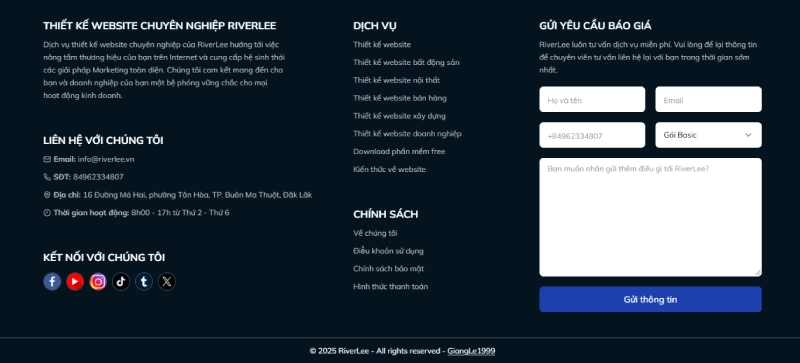
How to Do It:
- Add sections like "Publishing Organization," "Responsible Content Manager," or "Expert Reviewer" at the footer of the website.
- Include links to detailed profiles of the company or individual to provide more information about their responsibilities.
Benefits:
- Enhances transparency by showing users who is behind the information they are reading.
- Avoids issues related to anonymous or unclear content sources.
Use Original Content (No Copying or Spinning)
Google prioritizes websites with original and valuable content for users. Copied or spun (rewritten) content not only frustrates readers but can also result in penalties if it violates copyright standards. This is especially important in building E-A-T, as Google expects content to reflect genuine expertise rather than unverified, copied information.
How to Ensure Original Content:
- Create fresh content from an expert perspective: Each article should offer unique, in-depth insights that only professionals with real experience can provide.
- Check for duplicate content: Use tools such as Copyscape, Quetext, or Grammarly Plagiarism Checker to ensure no text is plagiarized or copied.
- Prioritize user value: Instead of writing content solely for SEO purposes, focus on creating articles that genuinely benefit users, making them more likely to return to your website.
Benefits:
- Boosts SEO quality scores and maintains sustainable rankings.
- Positions the website as a trustworthy source of information.
- Avoids being penalized by Google’s algorithms, such as Google Panda.
Learn more: Guide to Writing Unique SEO Content and Avoiding Duplication.
Avoid Overly Aggressive Sales Navigation
One common mistake that reduces a website's credibility is focusing too much on directing users to sales pages without providing enough valuable information. This can make users feel pressured and leave the page immediately, increasing the bounce rate—a critical SEO metric.
How to Optimize:
- Balance the content: Instead of focusing solely on products or services, offer guides or Q&A-style content to diversify your content offering.
- Use CTAs appropriately: Add call-to-action (CTA) buttons only at relevant places, such as at the end of articles or between sections, to avoid disrupting the reader's experience.
- Optimize natural navigation flow: Lead users from informational posts to sales pages through natural links rather than forcing them with heavy link placements.
Benefits:
- Keeps users on the website longer, increasing average time-on-site.
- Creates a professional impression and improves the brand's credibility in the eyes of potential customers.
Avoid Sensational Clickbait Headlines
Sensational or "clickbait" headlines may initially attract more clicks, but if the content does not deliver on the headline's promise, users will quickly leave. This negatively affects SEO performance. Google devalues websites with misleading or exaggerated headlines, as they indicate low trustworthiness.
How to Create Optimal Headlines:
- Focus on accuracy: Ensure the headline accurately describes the article's content and reflects the core information.
- Naturally optimize keywords: Include the main keyword in the headline but avoid overstuffing or using exaggerated phrases such as "shocking," "unbelievable," or "breaking news."
- Create intrigue through value: Craft headlines that pique curiosity while still providing informative value, e.g., "5 E-A-T Optimization Tips to Boost Website Traffic by 200%."
Benefits:
- Encourages users to stay longer and reduces bounce rate.
- Increases the likelihood of the website being shared naturally on social media platforms.
- Builds trust with readers who feel the website delivers what it promises.
Learn more: How to Write Engaging Headlines Without Being Misleading.
Increase Time on Site
The amount of time users spend on your page (Time on Site) is a significant signal for Google about the quality and relevance of your content. When users spend more time reading an article, it shows that the content is valuable and can help boost your website’s ranking in search results.
How to Improve Time on Site:
- Engaging introductions: Create captivating opening paragraphs to hook the reader right from the start.
- Readable formatting: Break down paragraphs, use subheadings (H2, H3), images, and bullet points to make the content easy to read.
- Internal linking: Suggest related articles for readers to explore, encouraging them to stay longer on the website.
- Incorporate videos or infographics: Improve user experience by combining text content with short videos or visual infographics.
Benefits:
- Increases user engagement with the content and reduces bounce rate.
- Boosts conversion rates from views to actions (e.g., sign-ups or purchases).
- Increases the chances of users exploring other pages on your website.
Learn more: How to Optimize User Experience to Increase Time on Site.
Use HTTPS and SSL Certificates
Using HTTPS instead of HTTP not only secures user data but also serves as an important ranking signal for SEO. Google prioritizes websites with SSL (Secure Sockets Layer) certificates because they ensure secure data exchanges between users and servers, reducing the risk of attacks or data breaches.
How to Implement:
- Install an SSL certificate: Ensure your website is equipped with an SSL certificate to enable HTTPS. Services like Let's Encrypt provide free SSL certificates for small websites, or you can purchase paid SSL for higher security.
- Check internal links: After switching to HTTPS, review internal links and redirects to ensure they no longer point to HTTP versions.
- Redirect from HTTP to HTTPS: Set up 301 redirects from old HTTP URLs to HTTPS to avoid traffic loss and maintain ranking.
Benefits:
- Increases user trust, especially for websites that request personal or payment information.
- Prevents "Not Secure" warnings in browsers that can cause users to leave immediately.
- Improves SEO rankings, as HTTPS is an official ranking factor in Google's algorithm.
Encourage Positive Reviews on Google Maps
User reviews on Google Maps play a significant role in building trust and authority for your business, especially for local service or e-commerce websites. Positive reviews increase credibility and enhance your chances of appearing in local search results.
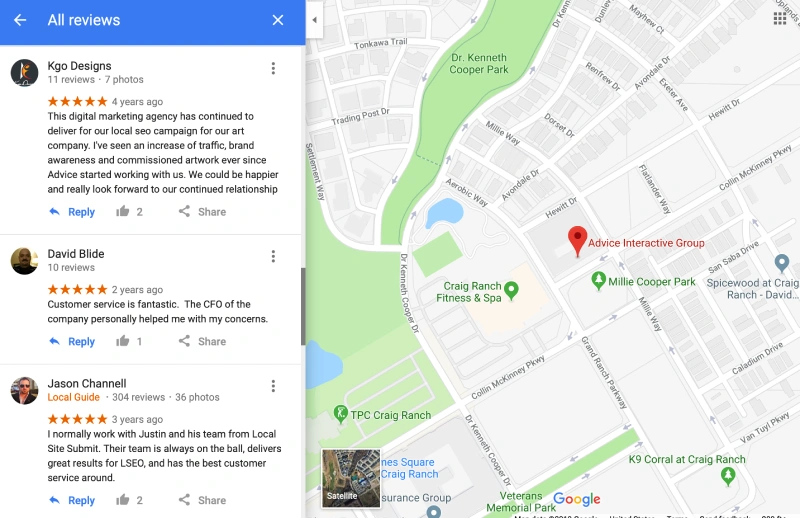
How to Get Reviews:
- Ask customers for feedback: After completing a service or sale, send a thank-you note and ask customers to leave a positive review.
- Respond to feedback: Reply to all reviews, both positive and negative, in a professional and polite manner to show respect for user opinions.
- Improve service quality: Positive reviews come from real experiences, so providing excellent service is the key to receiving good feedback.
Benefits:
- Increases the chance of appearing in prominent local search results (Local Pack).
- Builds trust with new customers who read real user reviews.
- Enhances brand reputation and improves your company's public image.
Learn more: Effective Local SEO Strategies to Boost Google Map Rankings.
Avoid Inaccurate Information and Align with Expert Consensus
One common reason websites lose E-A-T points is by publishing inaccurate information or presenting views that conflict with expert consensus. This is especially critical for YMYL (Your Money, Your Life) websites, where misinformation can have serious consequences for users.
How to Ensure Accurate Content:
- Fact-check before publishing: Always reference reputable sources such as trusted news outlets, research papers, and official reports.
- Cite credible sources: When using data or expert opinions, cite sources from authoritative organizations in the field.
- Update outdated content: Regularly review and update old articles to ensure the information remains relevant and correct.
Benefits:
- Increases website credibility when users trust the information provided.
- Avoids Google penalties or ranking drops for violating accuracy standards.
- Differentiates your website from competitors by offering reliable and authoritative content.
Remove Low-Quality Content from Your Website
Low-quality content not only degrades the user experience but also negatively impacts the SEO performance of your entire website. Google may downgrade your website's ranking if it contains too many short, superficial articles that provide little value.
How to Handle Low-Quality Content:
- Remove outdated or irrelevant articles.
- Update and expand content: Instead of deleting entirely, consider adding more detailed information to make the article more comprehensive and valuable.
- Merge duplicate articles: If you have several articles on similar topics, combine them into one complete, high-quality post.
Benefits:
- Improves the overall quality score of your website.
- Increases time-on-site due to more detailed and engaging content.
- Reduces the risk of Google penalties for having too many low-quality posts.
Avoid Self-Citations or Fake References
A critical error many websites make is creating unverified references or linking to their subdomains as "evidence" for their content. This not only harms the website's credibility but also risks Google penalizing the site for manipulating SEO with fabricated sources.
How to Properly Cite Sources:
- Cite reputable sources, such as major news outlets, educational institutions, or peer-reviewed research.
- Avoid consistently using links from unknown websites or non-specialized sources.
- Use links to scientific documents or expert articles to reinforce the authority of your content.
Benefits:
- Enhances professionalism and trustworthiness of your website content.
- Increases the likelihood of being referenced by reputable websites, creating natural, high-quality backlinks.
- Reduces the risk of being flagged as untrustworthy or manipulative by Google.
Build Backlinks from Reputable Websites (Quality Backlinks)
Quality backlinks are one of the core elements of building authoritativeness for your website. When a reputable website links to your article, it not only drives more traffic but also signals to Google that your content is credible and valuable.
How to Build Quality Backlinks:
- Create high-value content: Write in-depth guides, research-based articles, or infographics to encourage other websites to reference your content.
- Guest posting: Publish articles on authoritative websites in your industry and naturally link back to your website.
- Partnership outreach: Connect with industry partners or bloggers to build relationships and exchange links in a non-spammy manner.
- Avoid low-quality links: Do not buy backlinks or use spammy link-building tactics, as this can lead to Google penalties.
Benefits:
- Increases your website's authority, improving rankings on Google.
- Drives organic traffic from referring websites.
- Strengthens your reputation within your industry.
Learn more: Strategies for Sustainable and Effective Backlink Building.
Optimize the FAQ Page (Frequently Asked Questions)
The FAQ page not only helps users quickly find answers to common questions but also enhances interaction and improves the website’s E-A-T score. It provides an opportunity to build trust by presenting accurate, detailed, and transparent information about your products, services, or related topics.
How to Optimize the FAQ Page:
- Gather frequently asked questions: Collect common queries from surveys, emails, or user interactions via chatbots and social media.
- Provide concise yet detailed answers: Keep answers short but informative, avoiding overly technical terms that may confuse readers.
- Add internal links: Direct users to more detailed pages to encourage further exploration and increase time-on-site.
- Include visuals or videos:
Make answers more engaging by adding screenshots or explanatory videos.
Benefits:
- Improves user experience: Users can easily find answers without needing to contact support directly.
- Increases trustworthiness: A detailed FAQ page demonstrates professionalism and transparency.
- Reduces bounce rate: Keeps users engaged longer due to interactive, helpful content.
A high-quality FAQ page not only supports users but also strengthens your website's trustworthiness and authority, making it a key component of your overall E-A-T strategy.
What Happens If You Ignore E-A-T in SEO?
Neglecting E-A-T in your SEO strategy can lead to severe consequences, especially for websites in YMYL (Your Money, Your Life) fields like healthcare, finance, and legal services. Failing to meet E-A-T standards can result in difficulty maintaining rankings and a significant loss of user trust.
Drop in Google Rankings
Google’s algorithm updates, such as the Medic Update, place heavy emphasis on evaluating E-A-T for YMYL websites. If your content isn’t created by experts or lacks transparency, your website could experience a steep drop in rankings or even disappear from the top search results altogether.
Loss of User Trust
Today’s users are more cautious when seeking information online, especially for content that directly influences personal decisions. A website lacking clear author credentials, contact details, or accurate information is often perceived as unreliable. This perception leads to increased bounce rates and fewer returning visitors.
Risk of Google Penalties
Google can penalize websites that provide misleading information or attempt to manipulate SEO rankings by publishing low-quality content, using unnatural backlinks, or creating sensationalized titles. These penalties can drastically reduce website traffic or even lead to delisting from Google’s index.
Impact on Revenue and Brand Reputation
A website that loses ranking or user trust will experience a significant drop in visitor traffic, reducing conversions and directly affecting revenue, particularly for e-commerce and service-based sites. Additionally, brand reputation will suffer, making it difficult to compete in the market.
Real-World Example:
In the healthcare industry, several high-ranking websites were severely impacted by the Medic Update for failing to meet E-A-T standards. These sites lacked expert authorship, failed to provide credible references, or contained outdated content. In contrast, websites with articles reviewed or written by certified medical professionals saw noticeable improvements in their rankings.
In summary, ignoring E-A-T can make it difficult for your website to stay competitive and harm your brand’s reputation. E-A-T is a critical factor for building a sustainable and successful SEO strategy.
Conclusion
Optimizing E-A-T (Expertise, Authoritativeness, Trustworthiness) is not just a trend in SEO—it is the foundation for building your website’s credibility and brand authority in the eyes of both users and search engines. By ensuring that your content is accurate, detailed, transparent, and backed by experts in the relevant field, Google will reward your website with improved rankings on search results pages.
However, E-A-T optimization is not a short-term task; it requires a consistent and strategic approach, from creating high-quality content and author profiles to strengthening your business's online presence across reputable platforms and social networks.
Neglecting E-A-T not only risks losing your website’s ranking but can also result in the loss of user trust—a trust that can be extremely difficult to regain. Therefore, treat E-A-T as a core strategy for building long-term growth and success in the competitive online landscape.
Read more: Comprehensive SEO Strategy for Improving E-A-T.
Finally, investing in E-A-T not only enhances your SEO but also reinforces your brand’s value and credibility in the eyes of users—an essential factor for achieving long-lasting success in the digital space.
Latest Posts

Lesson 26. How to Use break, continue, and return in Java | Learn Java Basics
A guide on how to use break, continue, and return statements in Java to control loops and program execution flow effectively.

Lesson 25. The do-while Loop in Java | Learn Basic Java
A detailed guide on the do-while loop in Java, including syntax, usage, examples, and comparison with the while loop.

Lesson 24. How to Convert Decimal to Binary in Java | Learn Basic Java
A guide on how to convert numbers from the decimal system to the binary system in Java using different methods, with illustrative examples.

Lesson 23. How to Use the While Loop in Java | Learn Java Basics
Learn how to use the while loop in Java with syntax, real-world examples, and practical applications in Java programming.
Related Posts
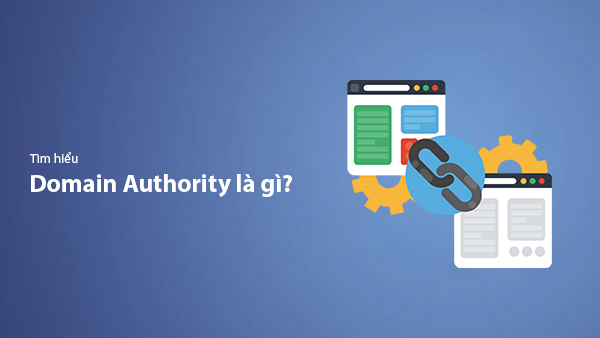
What is Domain Authority? 13-Step Guide to Improve DA Score for Your Website in 2025
Discover what Domain Authority is and its importance in SEO. A detailed guide on the 13-step process to effectively increase DA, from content research and technical optimization to building quality backlinks for a sustainable SEO strategy.
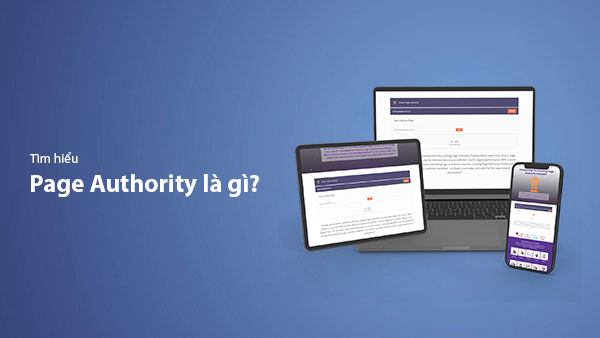
What is Page Authority? The Importance of Page Authority for SEO in 2025
Learn what Page Authority (PA) is and its role in SEO optimization to help improve your website's ranking on search engines in 2025.
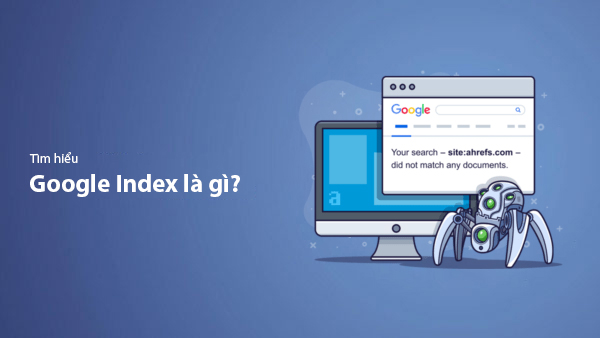
What is Google Index? A Guide to 13 Ways to Speed Up Website Indexing in 2025
Discover what Google Index is and learn detailed guidelines on 13 effective ways to get your website indexed quickly and boost your SEO rankings on Google in 2025.
![What is Onpage SEO? 23+ Basic & Advanced Onpage Optimization Checklist [2025]](/blog-posts/seo-onpage/seo-onpage-thumb.jpg)
What is Onpage SEO? 23+ Basic & Advanced Onpage Optimization Checklist [2025]
Learn the concept of Onpage SEO and the 23+ basic to advanced Onpage optimization checklist to improve website quality and boost search rankings effectively.

